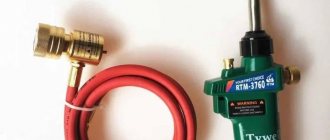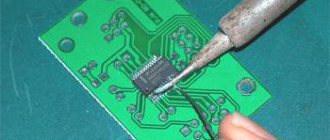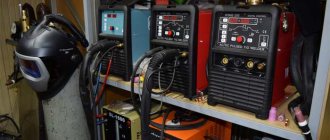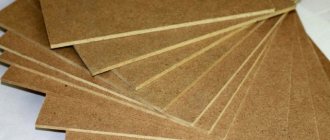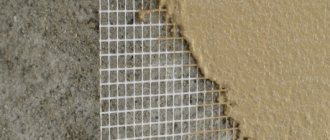Most metal surfaces undergo oxidation reactions when exposed to oxygen in the air. As a result, a layer of oxides is formed.
When metals have to be soldered, oxide substances interfere with the formation of a normal seam. Therefore, cleaning is a mandatory preliminary procedure. During soldering, the solder should envelop the parts as tightly as possible.
Excessive surface tension prevents the melt from spreading. In addition, the difficulty of carrying out high-quality soldering lies in the rapid oxidation of the hot melt in the air atmosphere.
Soldering flux helps solve all problems, the use of which ensures surface cleaning, promotes uniform distribution of the solder melt, and also inhibits oxidation of the working area.
Principles of classification
Anyone who does soldering should have an idea of what fluxes exist. There are several well-known and quite accessible substances, for example, borax or rosin, on the basis of which other compositions are made.
In general, the types of fluxes are varied, just as the materials of parts and soldering methods are varied. Approaches to classification are reflected by GOST. The division into groups occurs according to several criteria:
- temperature range of application;
- type of solvent (flux substances are dissolved in alcohol or water);
- type of activator (the main substance that causes protective processes);
- physical state (powder, liquid, paste, gel).
Fluxes exhibit maximum activity in different temperature ranges. One group is recommended for soldering at relatively low temperatures, up to 450 ℃; the second – at temperatures exceeding the specified value.
There is also a division of fluxes according to the mechanism of action, which is closely related to the properties of the activator. Reactions of interaction with the materials of parts can be chemical or electrochemical in nature. In some situations, fluxes provide only protection, in others they have a reactive effect.
Despite the varied characteristics of the compositions, the requirements for them are the same. The product must have a strictly defined fluidity so that the composition covers the working area of the parts, but does not flow beyond it.
Drugs should not enter into uncontrolled reactions. Flux should always have less density and adhesiveness (stickiness) than the mass of solder.
Flux components cannot burn out or evaporate. The final stage is very important. You need to be able to easily clean the soldering area from plaque after finishing work.
How to choose the right flux
Even with knowledge of the varieties and technical characteristics, not every person understands how to choose a flux. For safe soldering, neutral fluxes should be chosen. They are suitable for working with a variety of parts, but when soldering large components, the work will be slow.
To speed up the process, you can use medium-active fluxes. Such compositions are suitable for working with various metals. For working with large parts, silver solders are ideal.
The best substitutes
It is not always possible to find solder at home to solder broken contacts or wires. In such situations, repairs can be carried out without purchased compounds. You can replace flux with several substances:
- amber;
- fat;
- "Aspirin";
- resin.
Before starting work, Aspirin must be dissolved in a small amount of liquid.
Resin on wood
Rosin group
One of the historically first groups consists of rosin fluxes.
Technical rosin is obtained from tree resin, so fluxes based on it are sometimes called resin-containing fluxes.
Light rosin does not contain any additives and is neutral in nature. This flux is convenient for working with a regular soldering iron. The product is sold ready-to-use and is intended for soldering copper and copper alloys with low-melting solders.
Alcohol-rosin flux contains one-fifth of rosin, four-fifths of ethyl alcohol. The mixture is prepared by simply dissolving the resin in ethanol and is used for soldering parts made of copper and copper alloys in hard-to-reach places, for which low-melting solders are used.
Rosin-glycerin flux is a three-component mixture containing 89% ethyl alcohol, 14% trihydric alcohol glycerin, 6% rosin.
The composition is prepared as follows: first, glycerin is dissolved in ethanol, then rosin is added there. The flux is recommended for hermetic soldering of parts made of copper alloys or pure copper in hard-to-reach places with fusible solders.
Residues of fluxes with rosin after finishing work can be easily removed with a brush dipped in acetone or alcohol. All fluxes presented above are not active.
Soldering fluxesFLUXES Neutral fluxes : Rosin and fluxes prepared on its basis. Rosin plays a dual role during soldering: it cleans the surface of oxides and protects it from oxidation. At a temperature of 150 C, rosin dissolves the oxides of lead, tin and copper, cleaning their surfaces during soldering . A very valuable property of rosin is that it does not corrode the surface during the soldering . Rosin is used for soldering copper, brass and bronze.
Alcohol rosin flux - (SKF, also known as KE, FKE, FKSp) - simple and effective for soldering printed circuit boards and radio components. Composition: alcohol 60-70%, rosin 30-40%, neutral, does not require rinsing.
FTS - radio assembly flux , for soldering parts of radio equipment and printed circuit boards, water washable. Flux residues are easily removed with water or an alcohol solution.
LTI 120 - flux , neutral. Composition: ethyl alcohol (66 - 73%), rosin (20 - 25%), activators - aniline hydrochloride (3 - 7%), triethanolamine (1 - 2%). It is not necessary to wash off the remaining flux; if desired, they can be easily washed off with alcohol, acetone, etc.
TAGS - radio-mounted, glycerin. For soldering radio installation elements; as well as for soldering carbon steel, nickel, copper and other non-ferrous metals with low-melting solders (150-320 C). Water washable. When soldering printed circuit boards it has residual resistance. Requires mandatory rinsing with water or alcohol!
Active fluxes:
Soldering acid - for soldering carbon steels, copper, nickel and their alloys. It is an aqueous solution of zinc chloride (15-40%). It is not used in the practice of radio installers, as it causes corrosion of the junction and destruction of wire insulation.
ZIL-1 is an active flux for soldering steel, iron, and cast iron with solders with a high lead content. Soldering temperature range 180-400 C. Contains zinc chloride, tin chloride, copper chloride and hydrochloric acid. Not suitable for soldering radio components!
FIM is a rosin-free active flux , best suited for soldering stainless steels, otherwise similar to soldering acid . Composition: phosphoric acid (density 1.7, 16%), ethyl alcohol (3.7%), the rest water. Soldering temperature range is 290-350°C; after soldering, be sure to rinse with water. In radio amateur practice, it is also applicable when soldering nichrome.
VTS is an active flux for soldering copper, silver, gold and their alloys. It is made on the basis of organic acids, due to which it acts mainly on oxides and contaminants and not on the metal itself. Composition: 63% technical petroleum jelly, 6.3% triethanolamine, 6.3% salicylic acid and ethyl alcohol. Remains of flux are removed by wiping the part with alcohol or acetone.
F38M - highly active flux . Unlike most, it fluxes nichrome, constant, manganin, most stainless steels and copper alloys (bronze, brass). Flux residues are easily washed off with water. Ingredients: phosphoric acid, glycerin, ethylene glycol, diethylamine hydrochloride.
Classification of imported fluxes
Classification fluxes (rosin - English rosin)
R (rosin) is pure rosin in solid form or dissolved in alcohol, ethyl acetate, methyl ethyl ketone and similar solvents. This is the least active group of fluxes , so it is used for soldering on fresh surfaces or on surfaces that have been protected from oxidation during storage. In accordance with the recommendations of the domestic industry standard OST4GO.033.200, this group of fluxes does not require removal of their residues after soldering.
RMA (rosin mild activated - slightly activated rosin) is a group of resin-containing fluxes with various combinations of activators: organic acids or their compounds. These fluxes have higher activity compared to type R. It is assumed that during the soldering process the activators evaporate without leaving a residue. But it is obvious that the soldering process must be guaranteed to be completed by complete evaporation of the activators. Such guarantees can only be provided by machine soldering with automation of temperature-time processes (temperature profile of soldering).
RA (rosin activated - activated rosin). This group of fluxes is intended for the industrial production of consumer electronic products. Despite the fact that this type of flux has a higher activity compared to those mentioned above, it is advertised as not requiring cleaning. Since its remains allegedly do not show visible corrosive activity.
SRA (super activated rosin - super activated rosin ). These fluxes were created for non-standard applications in electronics. They can be used for soldering nickel-containing alloys, stainless steels and materials such as Kovar alloy. SRA type fluxes are very aggressive and require careful cleaning under any circumstances, so their use in electronics is strictly regulated.
No clean (does not require rinsing). This group is specially created for processes where it is not possible to use subsequent cleaning of boards or where it is difficult for some reason. The main difference between this group is the extremely small amount of flux on the board at the end of the soldering process/ soldering . Aluminum under normal conditions is covered with a dense oxide film that prevents soldering. If you remove this film and protect the surface of the aluminum from oxidation, then soldering occurs without difficulty. It is best to solder with pure tin or solder containing at least 60% tin; it is convenient to use regular POS-61. You should take into account the high thermal conductivity of aluminum and take a soldering iron of sufficient power. For soldering thin aluminum, a soldering iron power of 50 W is sufficient; for aluminum 1 mm thick or more, a soldering iron with a power of 90 W is desirable. Soldering without flux to the aluminum at the soldering and the surface of the aluminum under the oil layer is cleaned with a scraper or a knife blade to remove the oxide film. Solder is applied with a well-heated soldering iron. It's even better to use gun oil; good and satisfactory soldering quality is obtained by using mineral oil for sewing machines and precision mechanisms, or Vaseline oil. When soldering 2 mm thick aluminum, it is advisable to preheat the soldering area with a soldering iron before applying oil. The easiest way is to use special fluxes.
F61A - flux for soldering aluminum . Highly active fluoroborate-based flux, intended for tinning and soldering parts and surfaces made of aluminum and its alloys. Soldering is done with solders of the tin-lead group with a tin content of more than 60% (and it is best to solder with pure tin) at a temperature of 250-350 degrees.
F-34 Flux for soldering aluminum and other light alloys. Residues are removed with water. Flux of medium activity and low acidity of residues.
F-64 Flux for soldering aluminum , other light alloys of beryllium bronze, etc. Residues are thoroughly removed with water. Flux of increased activity. Aluminum does not even have to be cleaned of the dense oxide film. There is also a soldering using a flux consisting of 2-3 g of lithium iodide and 15-20 g of stearic acid.
Acid (active) group
Active fluxes are made on the basis of hydrochloric or orthophosphoric acid, in rare cases - hydrofluoric acid; their composition may include zinc chloride, chloride or fluoride metals. Such fluxes are also called corrosive fluxes.
Active flux dissolves the oxide film well, but its residues can corrode the metal. For soldering radioelements and circuit boards, such compounds must be used with caution, carefully removing the remaining film. They are usually used for corrosion-resistant steels, copper and its alloys, galvanized iron, nickel, nichrome.
Types of fluxes for soldering
Soldering fluxes come in several types, depending on the effect of these compounds on the contacts being connected during heating. Before purchasing a fusible substance, you need to familiarize yourself with its main types.
Active fluxes
These are fluxes containing predominantly hydrochloric acid. They are used to work with iron parts. During the soldering process, these compounds exhibit a powerful chemical reaction. They are not used when working with radio equipment, as they quickly corrode the board.
Acid-free fluxes
These are liquid fluxes that are made on the basis of turpentine, glycerin and ethyl alcohol. Such compositions melt up to 150 degrees. Acid-free fluxes are used for soldering small parts.
Soldering small parts
Activated fluxes
Compositions made on the basis of salicylic acid. Used when connecting elements that do not require initial stripping.
Anti-corrosion fluxes
These are special substances that clean parts from deposits that appear during the corrosion process. They protect the connection point from destruction during operation. Manufactured on the basis of orthophosphoric acid.
Protective fluxes
The main feature of such compositions is the absence of a chemical reaction. Protects parts from corrosive processes. They are made from wax, olive oil or petroleum jelly. Such compositions begin to melt at 70 degrees. During heat treatment they do not emit harmful substances. Also, when working with protective fluxes, there is no need to pre-clean the parts.
Alcohol based
For ordinary soldering of parts made of precious and non-ferrous metals, and important work with products made of ferrous metals, a solution is used. It contains ethanol - 75%, rosin - 24%, zinc chloride - 1%. All flux components are dissolved the day before.
If you need to get a particularly strong connection when soldering the same parts, then use paste. Its composition should include 80% petroleum jelly, 16% rosin, 4% zinc chloride. Residual deposits after finishing work can be easily removed with a brush dipped in acetone.
It is recommended to solder nickel and platinum products with a flux, which mainly contains ethanol with the addition of 3% glycerin and 1.4% zinc chloride. After soldering is completed, the work area is washed with plain water.
For radio installation soldering, a flux made from ethanol (from 63% to 74%), rosin (from 20% to 25%), diethylammonium chloride (from 3% to 5%) and 1-2% triethanolamine is used. The remaining mixture after soldering can be washed off with acetone, alcohol or left on the surface.
For many metal alloys (iron, nichrome, silver, bronze, zinc, stainless steel), a flux of 70% ethanol, 22% rosin, 6% phenylammonium chloride and 2% triethanolamine is suitable.
Fluxes made from 75% ethyl alcohol, 25% rosin and 5% metaphenylenediamine or hydrazine hydrochloride have good qualities. They satisfy all soldering requirements.
The universal composition may release volatile components when heated. Therefore, soldering must be carried out in the presence of working ventilation. Storage of ethanol-based fluxes requires special conditions.
The container with the solution must be sealed tightly. If the bottle is left slightly open, the alcohol will begin to evaporate. This will lead to an increase in the concentration of the remaining reagents and a change in the properties of the flux.
FIM
In soldering, very strong fluxes such as phosphoric acid and soldering acid are often used. Often, acid-free rosin and its solutions cope with their task quite well. Both approaches have their advantages and disadvantages. Very high activity is fast and high-quality soldering of even difficult-to-cut materials. But at the same time, the residues continue to eat up the metal for a long time. Rosin solders extremely slowly. On the plus side, it is believed that everything is so safe after it that you don’t have to wash anything off. In the center between these poles of consumer properties is the wonderful FIM flux.
Of course, we can say that having received the advantages - high soldering activity and low acidity of the residues, it does not avoid the disadvantages - reduced fluxing power and a remaining acidic film that requires removal. But the brilliant soldering result and the residues that can be easily washed off with a cloth truly inspire respect for this transparent liquid.
The product contains a small percentage of phosphoric acid, which determines its uniqueness. It must be said that this food additive is also included in Coca-Cola and other products. The wetting agents of the flux draw the tin-lead alloy in their wake into the narrowest cracks and folds of the surface.
When should this flux be used?
- When the material is difficult to solder, there are oxides, rust, etc.
- The surfaces have deep recesses and there is a risk that the internal cavities will not be wetted and therefore not soldered.
- Tinsel is a bunch or twist of wires. Here again the feature of improved wettability is used.
When should you not use it?
- On printed circuit boards.
- In high frequency circuits.
- When flushing is mandatory but difficult due to design features.
Soldering
Working with this cast is quite pleasant. It does not roll into balls, but wets the parts in the places where you applied it. When heated by a soldering iron, the liquid carries the solder into the treated areas, joining or tinning the parts.
Post-processing.
Very often this flux is chosen so that nothing else can be done after soldering. But we recommend wiping all areas that have been fluxed with a cloth soaked in water. This will aesthetically improve the result - the adhesions will shine. You also don't have to worry about the solder acidifying. If concern about the consequences becomes very acute, then it is better to use a special “Flux Remover” and a large amount of H2O. This will save you from all problems in the future.
Range:
- For convenience, we offer products in various packaging:
- from 6 to 15 milliliters these are bottles with a dispenser.
- For reliability, we offer a glass jar. It has the highest barrier properties and is complemented by two lids: insertable and screw-on.
- For ease of spreading, a container with a built-in brush. (20 milliliters)
- An elongated drop dispenser can also be extended with a needle from a regular syringe. In this case, the droplet size is reduced to picoliters. (25, 50, 100 mL)
- By purchasing in containers of 0.5, 1, 5 liters you can save significantly. The lids on these containers have a control ring.
Package.
For ease of distribution, each product unit is combined with its own kind at several levels. Usually this is a group and transport. The first is a polyethylene tie of 10 pieces. It is convenient for warehouse and internal store movements. Sending to other cities requires a more serious approach. At this stage, corrugated cardboard boxes make logistics easier.
To find out how and in what form the products are packaged, check out this table.
Aqueous solutions and improvised means
If in all previous flux solutions the base was a liquid organic substance, then the composition with the abbreviation FIM pleases with the possibility of preparation on water.
To water you need to add 16% phosphoric acid with a density of 1.7 g/ml and 3.7% ethanol. Flux is used for soldering steel, copper alloys, and precious metals. When finished, rinse the work area with water.
Many more compositions with different proportions of components can be given. Preparation methods depend on specific operating needs and soldering conditions.
If there is an urgent need to solder something at a remote dacha, where it is impossible to buy anything at all, then extreme advice will come in handy. For example, dissolve aspirin in cologne or ammonia in glycerin.
You can use salicylic alcohol, fruit juice (it contains natural acids) and vegetable (preferably olive) oil. Of course, plaque and soot will form on the parts, but in extreme cases, these tips will help you get out of the situation.
Soldering specialists often prepare fluxes themselves, so there are quite a few recipes for preparing solutions. However, it is always possible to buy ready-made drugs. Manufacturers supply them to the market in abundance.
Ready-made formulations
Among the ready-to-use compositions, you can choose a flux for lead, lead-free or rosin-free soldering. Fluxes are produced in the form of pastes that are convenient to apply to metal. Sometimes flux compounds are placed in a hollow solder wire.
Borax
Multifunctional borax is constantly in great demand. This flux has been known for a long time and is suitable for soldering pure copper, copper alloys, cast iron and steel products.
Borax is used in the form of powders or solutions, in pure form or with boric acid and other additives. The flux has an affordable price and a reliable reputation in the market for soldering products.
Gel
Among gel fluxes, Flux-Plus products stand out. Of course, it costs a lot, but the price is compensated by its excellent qualities and ease of use for soldering.
Amtech gels are popular. Original products are more expensive. Flux labeling can be deceiving. Counterfeit products also have such inscriptions.
Oddly enough, this is the only type of flux whose fake will not disappoint. The Chinese product also has good soldering properties. Unlike the original, the residual plaque has to be removed.
Application procedure
Before you start soldering with flux, you need to understand how to use it. The application process will depend on what type of low-melting composition is used:
- When using hard solders (tin rod), you need to dip the soldering iron into the reagent body and hook a small amount of solder.
- If a liquid ready-mix is used, it can be applied with a brush.
- When working with paste, you need to apply it to the joint with a stick or toothpick.
Also, we must not forget about cleaning the surface from oxidation.
The entire process of using a low-melting substance can be divided into several stages:
- Initially, the surfaces are cleaned.
- After cleaning, a layer of flux is applied.
- Using a soldering station, the joining compound and parts are heated.
Next, you need to wait for the seam to harden and further process it.
Without a special composition it will not be possible to connect the contacts. Experienced craftsmen suggest that beginners do the work without flux and see the result - the work will take much longer, the shock will quickly fall off. Pure tin is considered the best additional material for soldering. However, this is not a cheap metal and is used in combination with lead.
Russian stamps
Among the domestic products, SKF is noticeable - a soldering flux made from alcohol and rosin. The prepared solution can be used immediately. All components are already mixed. It is easy to use, the residual layer can be easily removed with gasoline or alcohol.
There are many narrowly targeted soldering compounds on the market from Russian manufacturers, designated by abbreviations: LTI, TAGS, ZIL, KRS, LK and so on. They contain highly active ammonium chloride, ammonia, amines, zinc chloride, and other active reagents.
When choosing a flux, pay attention to the recommendations for use. In mixtures, every component matters.
Some types are only suitable for working with hard solders. There are types designed for specific alloys. Thus, special reactive compounds have been developed for soldering aluminum. You should carefully study the label and then select a flux.
What is flux and its key features?
Not many beginners know what flux is and how it is used in the soldering process. This is a connecting mixture. It contains materials that melt easily. Before purchasing flux, you need to pay attention to several factors:
- operating temperature of additional composition;
- the type of metal to be worked with;
- temperature at which the soldering process begins;
- the presence of additional surfaces that surround the adhesion site;
- the presence of an anti-corrosion film on the metal surface.
There are two types of additional compounds used for soldering. Some are hard and melt at high temperatures. Others are soft and you can start working with them at low temperatures.
Purpose
To work with additional substances, you need to know what flux is used for when soldering. To connect the contacts on the board, it is necessary to heat them to a temperature of over 500 degrees. This can damage important components of the board. To prevent permanent breakdown of electronics, low-melting compounds are used, in which lead and tin predominate. They melt at temperatures up to 500 degrees and help connect broken contacts.
To connect light parts, it is enough to use light alloy solder, which can be worked with at minimum temperatures. To connect large parts, it is necessary to use hard types of solder.
Board (Photo: pixabay.com)
Application of flux
Before using solder and flux for soldering, you need to pay attention to certain characteristics:
- resistance of the composition to corrosion processes;
- working size of the connecting seam;
- connection strength;
- melting temperature.
Very often, tin rod, rosin are used as solder...
Storage
For simple repair work at home, it is enough to purchase a tube of flux. It must be stored in a tightly closed container. The liquid composition must not be allowed to come into contact with moisture. Also, do not store fusible compounds near heating devices and open flames. The temperature in the room where the flux is stored should not be allowed to rise above 25 degrees. It is advisable to dispose of compositions that were stored in packages that were not sealed properly and purchase a new one.


